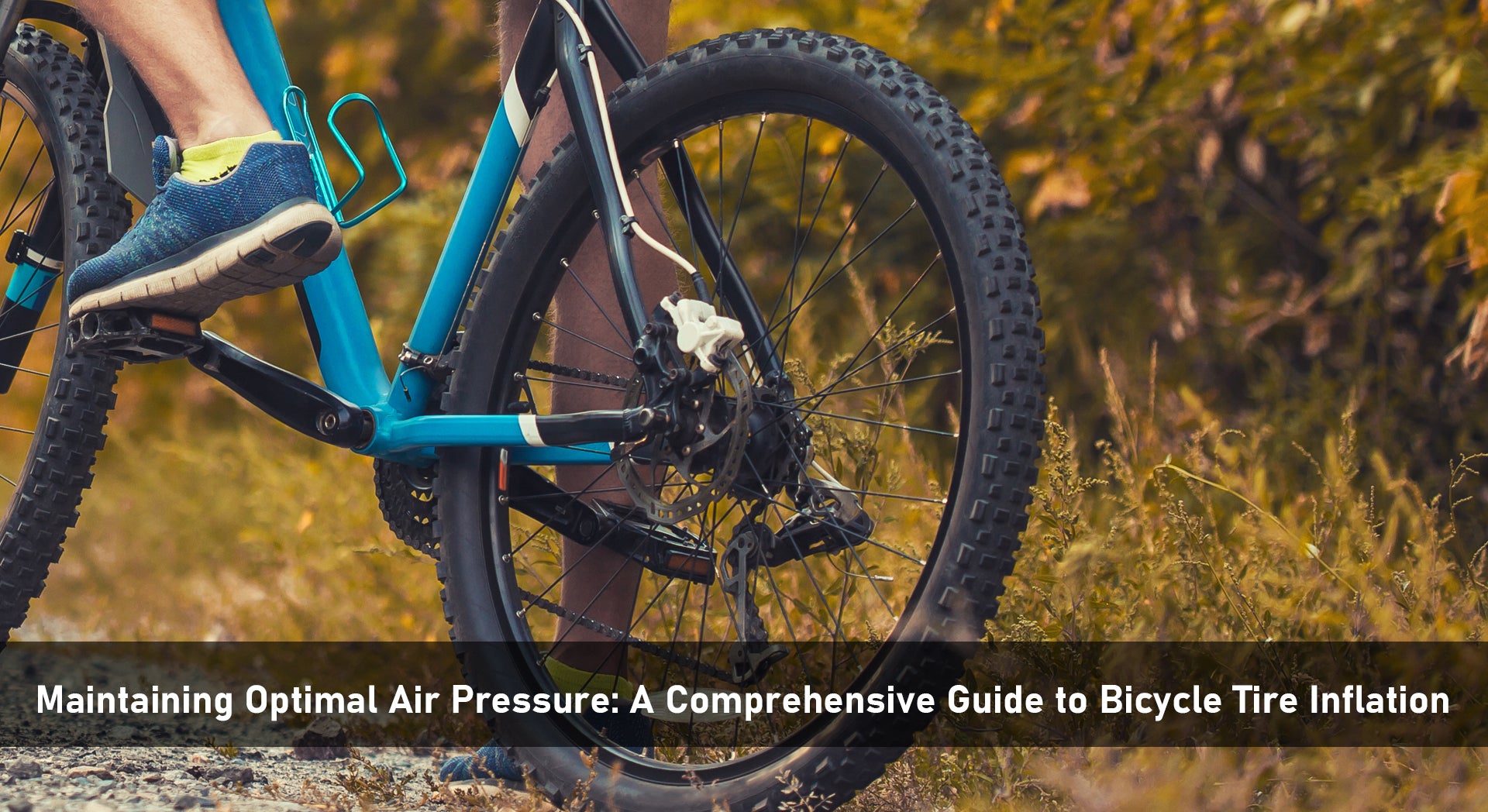Les pneus de votre vélo subissent une pression importante, supportant à la fois votre poids et celui du vélo lui-même, sans parler de toute charge supplémentaire. Il est donc essentiel de maintenir la bonne pression d'air. Rouler avec des pneus sous-gonflés accélère non seulement l'usure, mais rend également plus difficile le pédalage efficace. D'un autre côté, surgonfler vos pneus peut entraîner une conduite difficile et inconfortable. Pour garantir une expérience de cyclisme en douceur, nous vous recommandons de vérifier la pression de vos pneus tous les mois et de les gonfler si nécessaire.
Facteurs affectant la pression atmosphérique
La pression d'air idéale dans la chambre à air de votre vélo dépend de plusieurs facteurs, notamment la largeur du pneu, le terrain de conduite et le poids combiné du cycliste et de la charge. Cette pression est généralement mesurée en « bars ». Pour ceux qui connaissent l'unité américaine PSI, une barre équivaut à environ 14,5 PSI, ou inversement, un PSI équivaut à environ 0,07 bar. Des tableaux de conversion sont facilement disponibles en ligne.
À mesure que la largeur des pneus augmente, la pression d'air requise diminue. Les vélos de course, caractérisés par leurs pneus étroits, nécessitent des niveaux de pression d'air plus élevés, dépassant généralement sept bars. En revanche, les VTT, avec leurs pneus plus larges et leurs bandes de roulement robustes, prospèrent dans une plage plus modérée de deux à trois bars. Les aventures tout-terrain bénéficient d'une pression d'air réduite pour une traction et une absorption des chocs améliorées. Les vélos de ville et les modèles de randonnée trouvent leur équilibre avec des pressions d'air comprises entre trois et quatre bars.
La plage de pression d'air recommandée par le fabricant est généralement imprimée sur le flanc du pneu. Notamment, plus le poids du cycliste est élevé, plus la pression d'air nécessaire augmente. Des pressions plus basses entraînent une résistance au roulement accrue, ce qui entraîne une usure accrue et des fissures potentielles sur les flancs de la carcasse du pneu.
Pour les amateurs de vélos électriques, il est particulièrement important de maintenir une pression de pneu optimale. Des pneus mal gonflés sollicitent davantage le moteur électrique, ce qui nécessite une dépense d'énergie supplémentaire. En optimisant la pression d'air, les cyclistes peuvent rouler plus efficacement, parcourir de plus grandes distances et réduire le risque de crevaison.
Contrôles de pression et de gonflage réguliers
Au fil du temps, la chambre à air de chaque vélo subit une perte d'air naturelle, la pression diminuant d'environ un bar par mois. Les pneus à pression plus élevée ont tendance à perdre de l'air plus rapidement. Bien que la mesure de la pression des pneus par la pression du pouce puisse fournir une estimation approximative, elle n'est pas entièrement fiable. Des pneus avec deux bars de pression peuvent sembler correctement gonflés, mais faire la distinction entre trois et quatre bars devient plus difficile. Par conséquent, nous recommandons d'utiliser un manomètre précis pour des mesures précises.
Si le pneu de votre vélo perd constamment de l'air, inspectez la carcasse du pneu pour déceler tout dommage et examinez la chambre à air pour déceler toute fuite à l'aide d'une bassine remplie d'eau. Les petites crevaisons peuvent souvent être réparées. La réparation d'une valve endommagée est toutefois un processus plus complexe. Dans les cas incertains, il est conseillé de remplacer toute la chambre à air et d'envisager des pneus résistants aux crevaisons.
Comprendre les types de vannes
Les chambres à air de vélo disposent de trois types de valves courants : la valve Auto (valve Schrader), la valve Express (valve Dunlop) et la valve Presta (valve française).
- Les valves Presta, que l'on trouve sur les vélos de course, les vélos de randonnée haut de gamme et les VTT, peuvent supporter des pressions d'air remarquablement élevées. Elles sont conçues pour être fines et sont disponibles en deux longueurs (40 et 60 millimètres).
- Les valves de voiture, fréquemment utilisées sur les VTT, permettent de vérifier facilement la pression d'air dans les stations-service équipées de manomètres standard.
- Les valves express, que l'on retrouve couramment sur les vélos de ville et de randonnée, sont plus grandes que celles des voitures et ont une forme conique. Elles peuvent être remplacées sans avoir besoin d'outils supplémentaires. Les pompes à vélo standard peuvent être utilisées pour gonfler les pneus avec des valves express.
Conseils pratiques pour le gonflage des pneus
Pour un résultat optimal, pensez à utiliser un compresseur ou une pompe à pied. Positionnez la roue de manière à ce que la valve soit en bas. Lors du gonflage d'une valve Presta, relâchez la tête de valve avant de fixer la tête de pompe avec le levier de verrouillage. Pour les valves de voiture, utilisez l'ouverture la plus grande ; pour les valves express et Presta, utilisez l'ouverture la plus petite de la tête de pompe.
Maximiser l'efficacité grâce à la pression des pneus
Maintenir une pression de pneu correcte garantit non seulement la sécurité et le confort, mais joue également un rôle essentiel dans l'amélioration de l'efficacité de votre conduite. Des pneus correctement gonflés offrent une résistance au roulement réduite, vous permettant de parcourir plus de terrain avec moins d'effort.
Considérations saisonnières
Il est essentiel d'ajuster la pression des pneus en fonction des saisons. Le temps froid entraîne une baisse naturelle de la pression des pneus, il faut donc veiller à les vérifier régulièrement, surtout pendant les mois d'hiver. À l'inverse, dans les climats plus chauds, les pneus peuvent se dilater, ce qui nécessite une légère réduction de pression pour maintenir des performances optimales.
En respectant ces consignes, vous pouvez maintenir la pression d'air correcte dans les pneus de votre vélo, garantissant ainsi une expérience de conduite sûre, confortable, efficace et agréable. Bon vélo !
Utilisez le code de réduction « YOSELILY » pour obtenir 10€ de réduction sur tous les achats via ce lien.


Partager:
Problèmes courants liés aux batteries de vélos électriques et solutions
Partager des moments heureux avec des amis : les vélos électriques deviennent un nouveau favori des réseaux sociaux